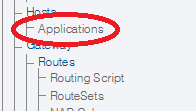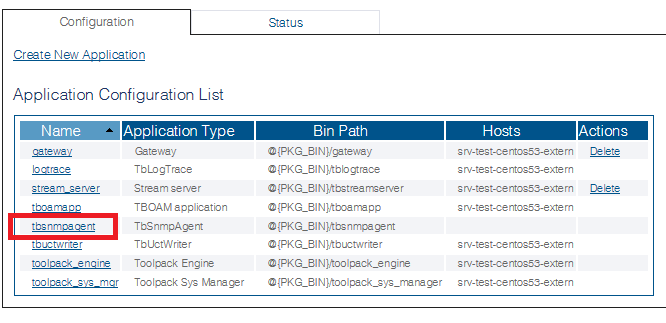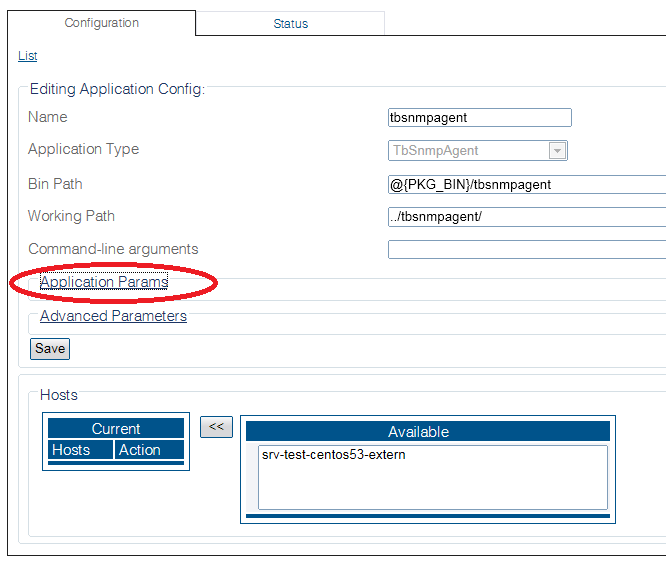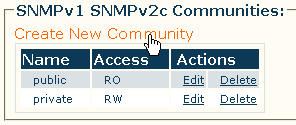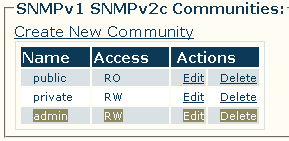Toolpack:Creating an SNMPv1/SNMPv2 Community B
From TBwiki
(Difference between revisions)
(New 2.8 Article) |
(→Applies to version(s): v2.8.) |
||
| Line 2: | Line 2: | ||
{{DISPLAYTITLE:Creating an SNMPv1/SNMPv2 Community}} | {{DISPLAYTITLE:Creating an SNMPv1/SNMPv2 Community}} | ||
| − | + | New '''communities''' can be created for SNMP versions 1 or 2, By default, the standard communities '''public''' (read-only access), and '''private''' (read-write access) have been created. | |
| − | + | ||
| − | + | ||
| − | + | ||
| − | + | ||
To create a new SNMPv1/SNMPv2 community, carry out the following steps: | To create a new SNMPv1/SNMPv2 community, carry out the following steps: | ||
| + | *Click '''Applications''' in the navigation panel. | ||
| + | [[Image:Snmp_cfg_0.png]] | ||
| + | <br/><br/> | ||
| + | *In the '''Application Configuration List''', select '''tbsnmpagent'''. | ||
| + | [[Image:Snmp_cfg_1.png]] | ||
| + | <br/><br/> | ||
| + | *Click '''Application Params''' | ||
| + | [[Image:Snmp_cfg_2.png]] | ||
| + | <br/><br/> | ||
*Click '''Create new community''' (under the '''SNMPv1 SNMPv2 Communities heading''') | *Click '''Create new community''' (under the '''SNMPv1 SNMPv2 Communities heading''') | ||
Revision as of 11:24, 12 September 2014
Applies to version(s): v2.8.
New communities can be created for SNMP versions 1 or 2, By default, the standard communities public (read-only access), and private (read-write access) have been created.
To create a new SNMPv1/SNMPv2 community, carry out the following steps:
- Click Applications in the navigation panel.
- In the Application Configuration List, select tbsnmpagent.
- Click Application Params
- Click Create new community (under the SNMPv1 SNMPv2 Communities heading)
- In the community creation window:
- Enter a unique name for the community
- Click the check box to allow or disallow the write privilege for the current community
- Click Create
- Verify that the "SNMP community was successfully created" message appears at the top of the following screen
- The new community should now appear under the SNMPv1 SNMPv2 Communities heading
